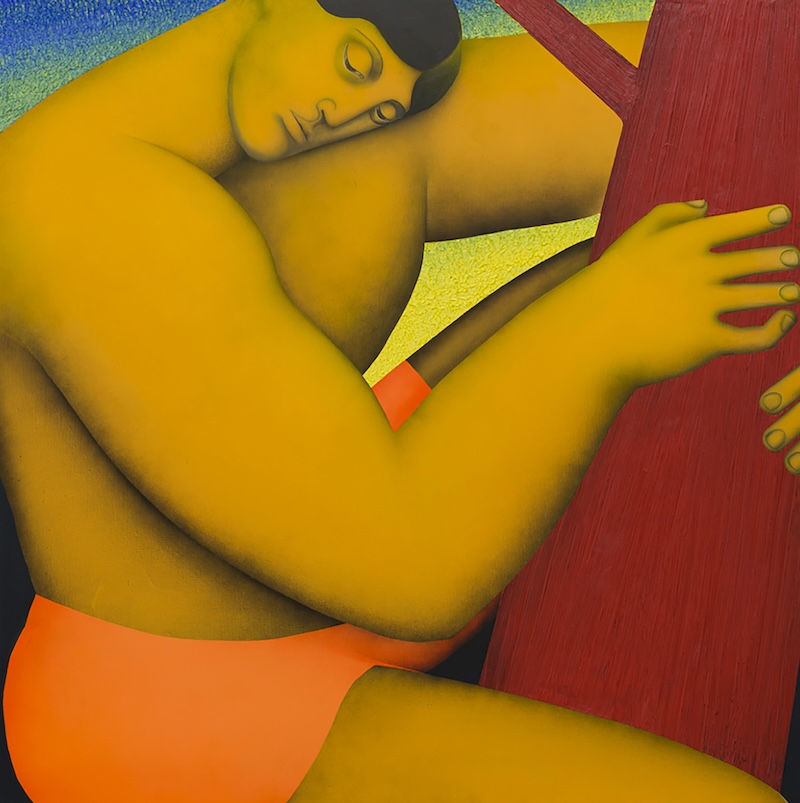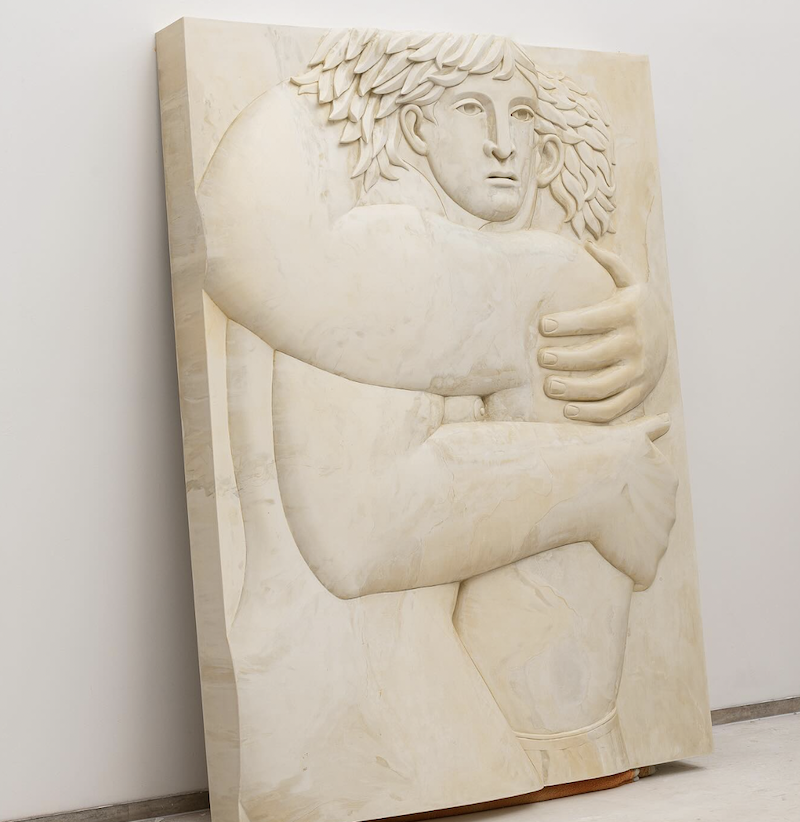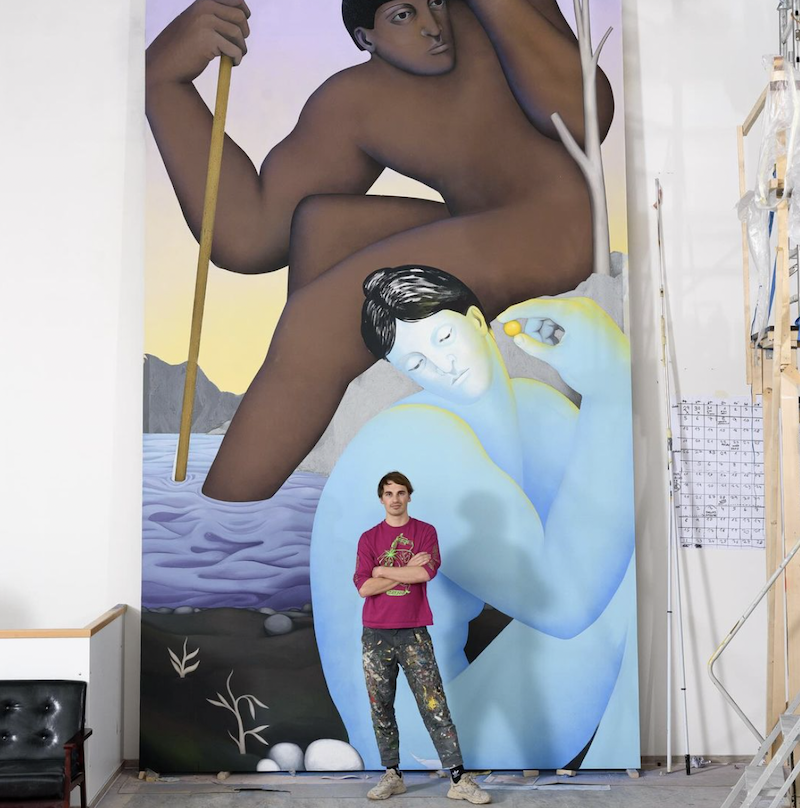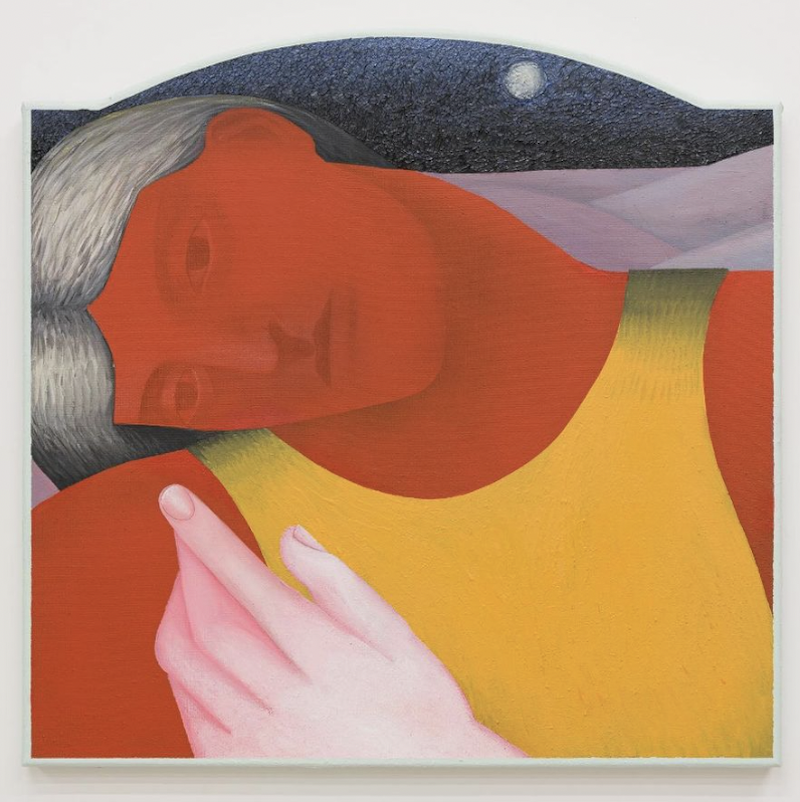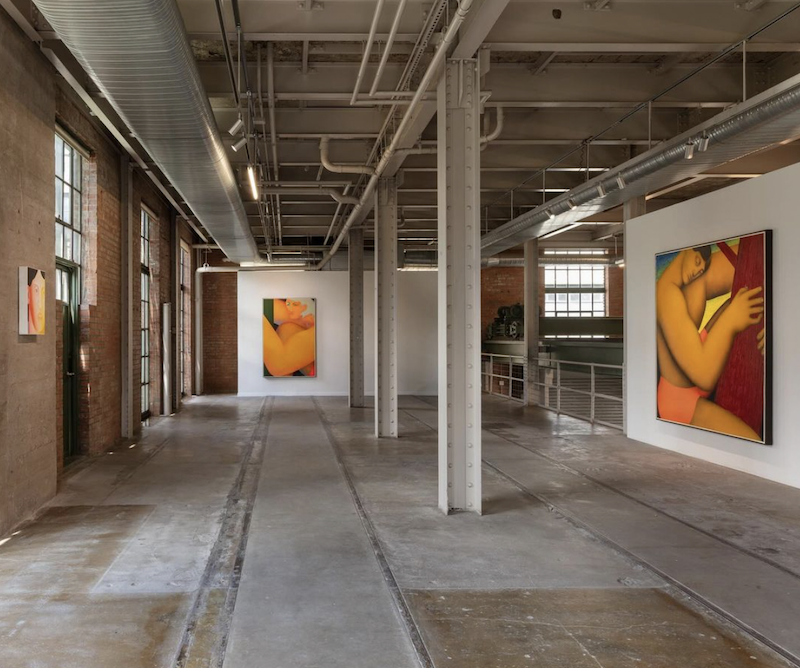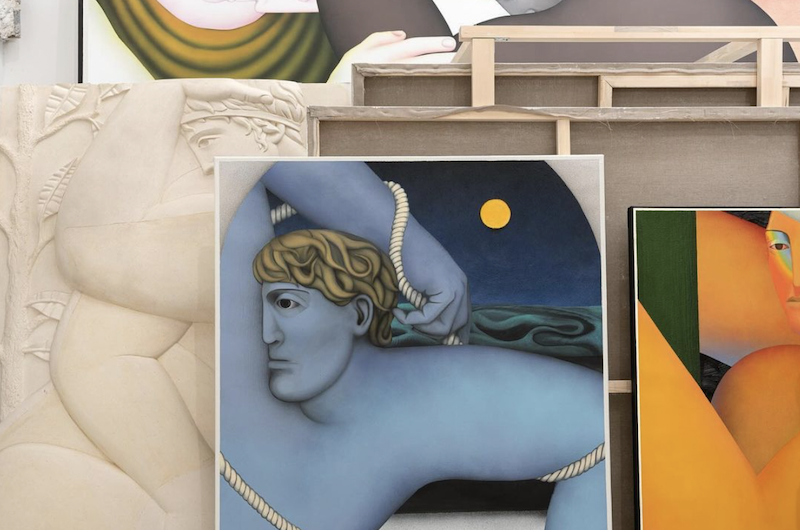Vojtěch Kovařík has an interest in grand heroic themes and classical imagery inspired by greek mythology. Kovařik’s bodies are without place, tightly situated within the parameters of the canvas edge. Their contemplative and sometimes anguished expressions are set amongst vacant ethereal landscapes with lilac gradient skies and metallic moonscapes. The figures’ skin and bodies often appear chiseled and rock-like. One can draw historical through-lines from the great works of Pierre Puvis de Chavannes, the late classical period of Renoir, Picasso’s robust 1921 summer production in Fontainebleau and the large-scale murals of Rufino Tamayo. His contemporary influences include the Neo-expressionist Markus Lüpertz and Georg Baselitz. In all of their godliness, Kovařik’s protagonists present as agonized and in state of mourning or loss, stone-gazed and in deep contemplation of their respective lot in life. Their physical strength and godly power is deemed irrelevant in the pensive moments in which they are depicted.
“Leandros and Hero” a site-specific, monolithic painting is a representation of a tragic love story. The figure of Hero, holding a glowing orb with her heavy-eyed downward gaze, is seen engulfed by the hovering figure of Leandros. As the myth goes, the figures fall in love but are divided by the sea. Every night Leandros swims across the Hellespont to spend the evening with his love. Hero lights a lamp at the top of her tower to guide his crossing. On a stormy winter evening, summoned by Hero’s glow, Leandros made an attempt to traverse the sea. Halfway through his swim, a strong winter wind extinguished the guiding light, causing him to loose his way and drown. Hero sees his body in the morning and throws herself from her tower to join him in death. Their bodies wash up on shore, locked in an eternal embrace.
Throughout the exhibition, we see Kovařik’s paintings communicate through the gaze, each painting having an awareness of the next, with Leandros’ futile yet inquisitorial view connecting the ground floor figures with with the observant subjects that populate the mezzanine floor.
Kovařík has had an affinity for sculpture since his early family travels to Greece, which informed his use of ceramics at art school, before he found his voice as a painter. His interest in historical reliefs can be seen in the volumous sculptural handling of the figural elements within the paintings, as well as the physical manifestations of the large wall reliefs of “Hermés” and “Lovers - Éros and Pysché”. Using a technique of layered acrylic resin, he achieves the effect of stone reminiscent of onyx, landing on a similar type of figural gigantism (in sculptural form) that can be seen in the the flattened surface of his paintings. Mixing varied materials such as sand and iron with oil and acrylic, his deeply saturated hues serve to convey a tactile sculptural experience of a modeled picture plane.
Vojtěch Kovařik’s paintings and sculptural reliefs convey an impervious monumentality that fully absorbs and envelops the viewer. Titles hint at fragmented storylines and mythical narratives. He achieves an open legibility through an undetermined pictorial adjacency. His version of the heroic theme challenges traditional ideas of strength and power, leading viewers to an unexpectedly intimate and introspective experience of the subject matter. The work in all of its forms has the capacity to lift the viewer from under the imperious weight of this world and into the next.
https://powerstationdallas.com/projects/vojtech-kovarik/



